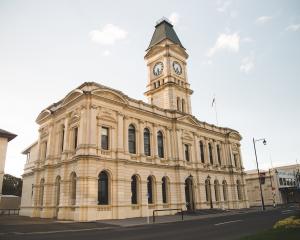
Moeraki adventurer Tom MacTavish is returned from retracing Sir Ernest Shackleton's heroic crossing of the subantarctic island of South Georgia 100 years ago. North Otago reporter Hamish MacLean caught up with him back at home.
Tom MacTavish, of Moeraki, describes South Georgia's inhospitable mountainous landscape as ''raw'' and ''a window in time''.
Entering King Haakon Bay last month and seeing what the three men who were the last hope for all aboard the ice-bound Endurance in 1915 saw, was surreal, he said.
''It's got an aura, the island, because it's an island in the middle of the Southern Ocean, that very few people get to visit.
''Seeing it, seeing this island rearing out of the cloud - seeing these massive peaks plastered in snow all the way down to sea level, it's pretty special.''
The Imperial Trans-Antarctic Expedition of 1914, led by Sir Ernest Shackleton, was a failed attempt to cross the forbidding frozen continent.
After Endurance sank, the 27 men aboard set up camp on sea ice until April 1916; when the sea ice broke, three lifeboats took the men to nearby Elephant Island.
From there, six men made the improbable journey aboard the lifeboat James Caird to South Georgia, where whalers were known to man a station.
''They rowed for five days,'' Mr MacTavish said.
''They were blown back constantly by the weather. And we're talking bone-chilling temperatures: -10, -15, plus wind chill, plus spray from the one-degree water, open boats - very, very lucky to survive.
Sir Ernest, of England, Frank Worsley, of New Zealand, and Tom Crean, of Ireland, landed at King Haakon Bay in May 1916.
They fitted screws through the soles of their boots and armed only with a carpenter's adze and rope made their way 55km across the glaciers of the island to Norwegian whalers on the far side of the island at Stromness.
No lives were lost, and the 27 men of Endurance were rescued.
''It was an incredible, incredible effort and it is widely considered the greatest survival story of all time, because it was just so out there,'' Mr MacTavish said.
Mr MacTavish was one of three young people chosen by the New Zealand Antarctic Heritage Trust to re-create the trip last month as homage to the journey.
Joined by James Blake, son of Sir Peter Blake, representing England, Sinead Hunt, of Ireland, the Antarctic Heritage Trust New Zealand's executive director Nigel Watson and two One Ocean Expeditions professional guides, the group retraced the route of that last desperate leg in Sir Ernest's journey to honour the story of survival and the spirit of adventure the men represented.
One hundred years ago, the three men walked across the island's glaciers; last month the party of six crossed the island on skis.
''It was one of the most memorable, if not the most memorable, ski tours of my life, but you wouldn't even remember the skiing,'' Mr MacTavish said.
''It was about the history, it was about remembering Shackleton and Worsley and Crean, it was about the wildlife ... it was about getting a feel for an incredibly wild and raw place, it was about the companionship ... and it was about sharing the expedition.''
A tourist boat dropped the team off at King Haakon Bay and picked them up four days later on the far side of the island, at the abandoned whaling station of Stromness.
During the day the temperature hovered around 0degC and at night it dropped to -5degC with added wind chill.
''It's an interesting feeling when you're looking at your boat going off into the distance, and it's left you,'' Mr MacTavish said.
He spent a sleepless first night with gusts threatening to rip his tent open, the poles bending under the force of the wind and touching him on his back.
Throughout the trip, blowing snow would limit visibility and obscure figures just 10m away, turning travelling companions into ghostly apparitions.
It was not the bellows of a ferocious wind on the second night, but the bellows of elephant seals that punctuated his sleep.
Two members of their party were blown off their feet as they tried to push on to their destination.
''It was manageable risk, but it was still an eye-opener. It was still the strongest winds I have ever encountered,'' he said.
''This place is unforgiving, and uncompromising, and it is furious.''
Next week Mr MacTavish will return to speak to pupils at schools he attended as a child: Waitaki Boys' High School, in Oamaru; East Otago High School, in Palmerston; and Hampden School.
The pupils there monitored the group's progress via Facebook, tracking points from a GPS unit with group.
He looked forward to sharing with the pupils the unforgettable trip.
It was important, he said,''to remember the past, to remember those people''.
''But also, there's a value in going out into the world and seeing it, and exploring.
''[It was also] a way of creating good stewards, people who will look after the world. I think that's an important part of exploration.''
The expedition
What: New Zealand Antarctic Heritage Trust's Inspiring Explorers Expedition 2015
Who: Tom MacTavish (New Zealand), Sinead Hunt (Ireland) and James Blake (United Kingdom)
Where: South Georgia Island
When: October 21-October 24
Why: Honouring the Heroic Age of Antarctic exploration, which ended when Sir Ernest Shackleton's Imperial Trans-Antarctic Expedition survivors stepped ashore in Wellington on February 9, 1917, after their ship Endurance was trapped in sea ice for months and sank in Antarctic waters on November 21, 1915.












